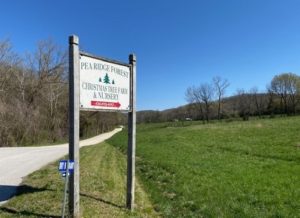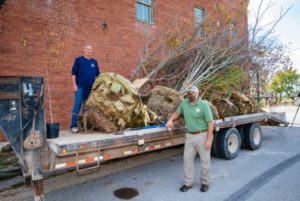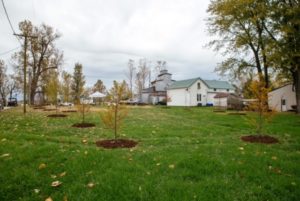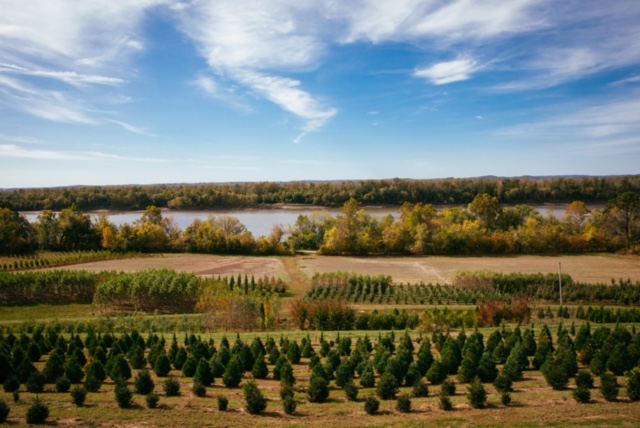By Karen Cernich
 Most of the trees planted at Treloar came from Pea Ridge Forests. All are native Missouri trees. “We tried to select the native trees that pioneers might have used on their way through here . . . Most of these are found along this corridor already, this bottomland, and that’s why we selected them,” said Bill, who designed the layout of the plantings. “Since they’re native, they’ll thrive. They’re pretty fool proof, because they’ve evolved here for thousands of years.” The only need they have is to be watered regularly. To make that easier, Dan and Connie activated an old well on the property.
Most of the trees planted at Treloar came from Pea Ridge Forests. All are native Missouri trees. “We tried to select the native trees that pioneers might have used on their way through here . . . Most of these are found along this corridor already, this bottomland, and that’s why we selected them,” said Bill, who designed the layout of the plantings. “Since they’re native, they’ll thrive. They’re pretty fool proof, because they’ve evolved here for thousands of years.” The only need they have is to be watered regularly. To make that easier, Dan and Connie activated an old well on the property.
Another factor that will aid the trees in adjusting to their new environment is that most were grown just down the road in the Hermann area. “That makes it even better for the trees because the soil type is similar,” Bill said.
 The list of tree species includes native oaks like bur oak, overcup oak and chinquapin oak; flowering trees like serviceberry, red bud and American fringe; as well as edibles like pecan, paw paw and persimmon trees. There also are a bald cypress and river birch. The trees, which are between 6 to 10 years old, were planted so they won’t crowd each other, Bill said. The ornamental trees may grow to around 25 feet tall, while others, like the bur oak, can grow up to 80 feet.
The list of tree species includes native oaks like bur oak, overcup oak and chinquapin oak; flowering trees like serviceberry, red bud and American fringe; as well as edibles like pecan, paw paw and persimmon trees. There also are a bald cypress and river birch. The trees, which are between 6 to 10 years old, were planted so they won’t crowd each other, Bill said. The ornamental trees may grow to around 25 feet tall, while others, like the bur oak, can grow up to 80 feet.
As someone who loves trees, Bill is excited to see the transformation of the Treloar lot.

“I think it’s great! It went from an old building that was falling down to an arboretum in just a few days. There’s not a lot of green space along the trail, so this will be a nice place for people to stop. And it’s great for the community, because now it’s like a little park.”
Plans are to add ID tags to the trees and an interpretive sign about the project.
